Diane Dietz is here, so expect some good RG reporting. I’ll blog what I can.
9AM: Finance and Facilities Committee — March 3, 2016 [Materials]
1PM: Academic and Student Affairs Committee — March 3, 2016 [Materials] (Page way down).
Tomorrow: Meeting of the Board — March 4, 2016 [Materials]
FFC:
Convene – Call to order and roll call – Approval of December 2015 FFC minutes (Action) – Public comment
No public comments –
1. Quarterly Treasury Report, Director of Treasury Operations Karen Levear
All is well, no questions.
2. Bond Issuance Authorization, Vice President for Finance and Administration/CFO Jamie Moffitt and Director of Treasury Operations Karen Levear
Ms Lavear is great. Asserts economists don’t know what will happen to rates – true enough! $50M 30 year debt, to pay for …
Well, honestly this is a little vague, but sounds very plausible. I woder how much will go to the Jocks?
If you want more info on UO’s basic financial position, check out the report from AAUP forensic accountant Howard Bunsis, here. Plenty of water in the well, given the years of drought.
3. Quarterly Financial Report and Update on State Budget Workgroup, Vice President for Finance and Administration/CFO Jamie Moffitt
Jamie gives her usual presentation: We’re “run-rate even” but face future challenges from increasing wages to the faculty peons and PERS.
Again Bunsis has much more interesting info, here. The faculty union has had Bunsis out a few times to explain the UO budget – maybe the board should invite him next time. Bunsis:
Kurt Wilcox asks where the $20M in reserves spent last year went. Moffitt says to recognize increased future PERS liabilities, and to labor and benefit costs.
And here’s a Bunsis graph that you will never see the UO administration put up in a meeting:
4. Framework Vision Project Overview and Capital Planning Update, Consultant Robert Sabbatini AICP FASLA and Vice President for Finance and Administration/CFO Jamie Moffitt
Lots of consultants, pretty presentation, totally illegible even on the screens.
Current UO land could support $34K students. (Undergrads? PhD students with associated labs?)
Here’s the meat – a new classroom/office building, and a new science lab building:
Plus a lot of parking garages. Sabbatini has a plan for removing Collier House. Yippee!
The faculty member on the board, Susan Gary, who is always careful to explain that she doesn’t really speak as a faculty member, goes off for a while on the fact that Sabbatini hadn’t looked at how expansion would impact the local neighborhood, by increasing the number of student who “frolic” at night, and drive down property values. Is she speaking as a property owner?
1:00PM Academic and Student Affairs Committee. Materials here.
Board of Trustees of the University of Oregon Academic and Student Affairs Committee Public Meeting 1:00 pm – March 3, 2016 Ford Alumni Center, Giustina Ballroom Convene – Call to order and roll call –
Introductory comments and agenda review –
Approval of December 2015 ASAC minutes (Action) – Public comment
1. Update on Vice President for Research and Dean Searches, Provost and Senior Vice President Scott Coltrane
Links here.
Vice President for Research and Innovation – Finalists campus visit schedule and information
Dean of the College of Arts and Sciences
Dean of the Lundquist College of Business
Dean of the School of Architecture and Allied Arts
Dean of the School of Journalism and Communication
Coltrane says the usual things. Using search firms, talks, lots of Dean finalists will be out in early April
2. Program Development and Approval (Action), Provost and Senior Vice President Scott Coltrane and Assistant Vice Provost Ron Bramhall
– Approval for New Master’s Degree in Sports Product Design
Ron Bramhall makes the pitch. Details here.
Allyn Ford asks what we’re going to trim to pay for this. What a great question. Read more on the dubious funding and Lillis’s past public statements here. Coltrane evades.
Ann Curry follows up about how this will be funded. Chuck Lillis doesn’t look like he likes this question. Coltrane evades.
– Approval for New Bachelor of Arts and Bachelor of Science in Arts Management
The Arts Management major is controversial given VPAA Blandy’s use of online AAD 250-252 courses to take gen ed credits away from CAS humanities and finance AAA. These generally online courses have no proctored exams and give as many as 2/3 of their students A’s:
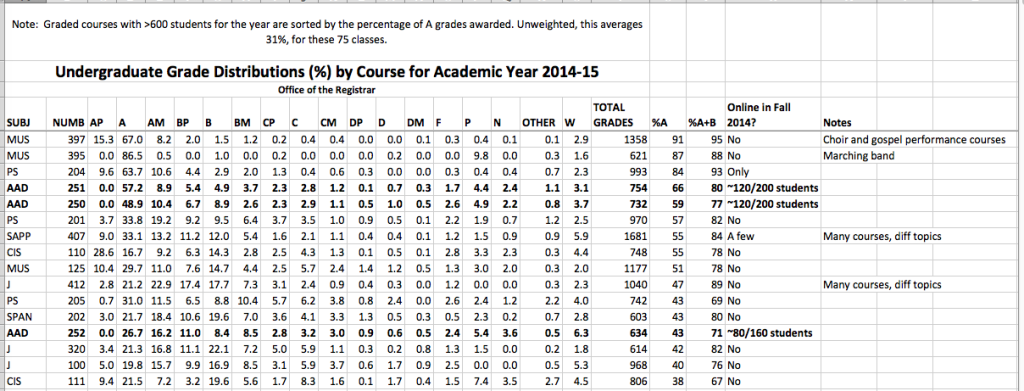
Read more about Blandy’s $1M student credit hour heist here:
He’s gotten even bolder:
Isn’t this the sort of thing that Trustee Susan Gary (Law) should be paying attention too?
She’s not. no questions from Gary, everything passes unanimously. Maybe she’s worried people might start asking about law’s $10M deal.
3. Resource Alignment Initiative, President Michael Schill, Provost and Senior Vice President Scott Coltrane, and Interim Dean of the College of Arts and Sciences Andrew Marcus
Schill: Every unit is being asked to make a 2% cut, to contribute to our larger academic strategic objectives. 3% next year.
Does “every unit” include athletics? Make Rob Mullens start paying the $2.4M Jock Box costs? Of course not. Perhaps one of the trustees will ask? Of course not.
Coltrane: We’re using the savings to grow the tenure track faculty. Some CoE hires, some cluster hire offers going out.
Marcus does a very good job with the nuts and bolts, sorry I’ve heard this before and won’t blog much.
He also gives a very nice shout-out to the faculty union. Careful to say they don’t endorse this, but credits them with helping him mitigate the impact – at least to some extent.
Then puts up this figure:
Which is useful, but note that the base for NTTF is about 100 – so all that green growth is not very much in numbers. But check this:
Marcus’s predecessors spent all the science start up money on other things. Like the $2.4M a year for the Jock Box. Or the $467,538 a year the academic side is still paying Rob Mullens for the right to use Mac Court for academic purposes:
Painful cuts. If Coltrane had had the guts to make tough choices as CAS Dean, Marcus would have been in much better place.
Notes that CAS has actually authorized 13 new career-track NTTF hires.
Curry: Why the 2012 drop in credit hours per students in Humanities?
Marcus: Children of the recession – all wanted to go to business school.
Curry: What about UO taking core classes at other universities to save money?
Marcus: We’ve heard that, don’t have good data yet.
Coltrane: We’re trying to figure this out. Students are *not* taking enough UO credits. [Sorry, *not* was missing in original.]
Curry: Could it be cost per credit?
Schill nods.
Lillis: “There’s an issue with tenure protecting some non-productive faculty”.
Schill: As a tenured professor, let me answer that. I’m a defender of tenure. Important for academic freedom. Bedrock of the universities ability to encourage faculty to ask unpopular questions. Protects faculty from retaliation.
Schill goes on: “Faculty do this job, often at financial cost, because they love it.”
Lillis: “I agree with everything Mike said.”
Schill asks Coltrane to explain the evaluation / promotion / referee incentives UO uses.
Rudy Chapas: It’s easy to see how hard these cuts have been for Marcus – you can see it on his face. The board knows this was necessary and thanks you.
Curry: Pretty clear that business, journalism, maybe AAA have a strong student advising system. I understand that is not true of the 40+ CAS departments. Is this fixable?
[Me: I went through 5 or so majors. Very bad advising. Not that I would have listened. I learned a lot dropping courses. Students try things, change their minds, try something new, it’s great.]
Coltrane: We got some state money for improving advising, Lisa Freinkel is in charge.
Susan Gary (Law) goes back to the tenure thing, says something about push for stronger tenure standards from Coltrane? Hard to hear her, sorry.
Paustian: Back to advising, problem with students filling up courses they don’t really need.
Kurt Wilcox: Steps in and does Susan Gary’s job for her. Not advocating for the faculty, but explaining to the trustees that there are legitimate questions about how the realignment is being handled in terms of timing, course coverage. Does Gary not know this? Is she afraid to explain it? Probably a bit of both.
Ginevra Ralph: Would like to hear more about the history of the budget model. Can we have a tutoring session on that? [She should talk to former CA Joe Stone or former CAS finance dean Marianne Nicols].
4. University Libraries, Dean of Libraries Adriene Lim Meeting Adjourns Following adjournment, trustees will do a site visit of the Knight Library with Dean of Libraries Adriene Lim.
Reads from slides. Come on.
Very proud of the university archives: Le Guin, Kesey, that zip drive she told Doug Park that Harbaugh had stolen, …
Banner year for fundraising. First unit to reach our $36M target. Still need science library etc.
Does a good job answering questions.
Meeting adjourns for a visit to the library.

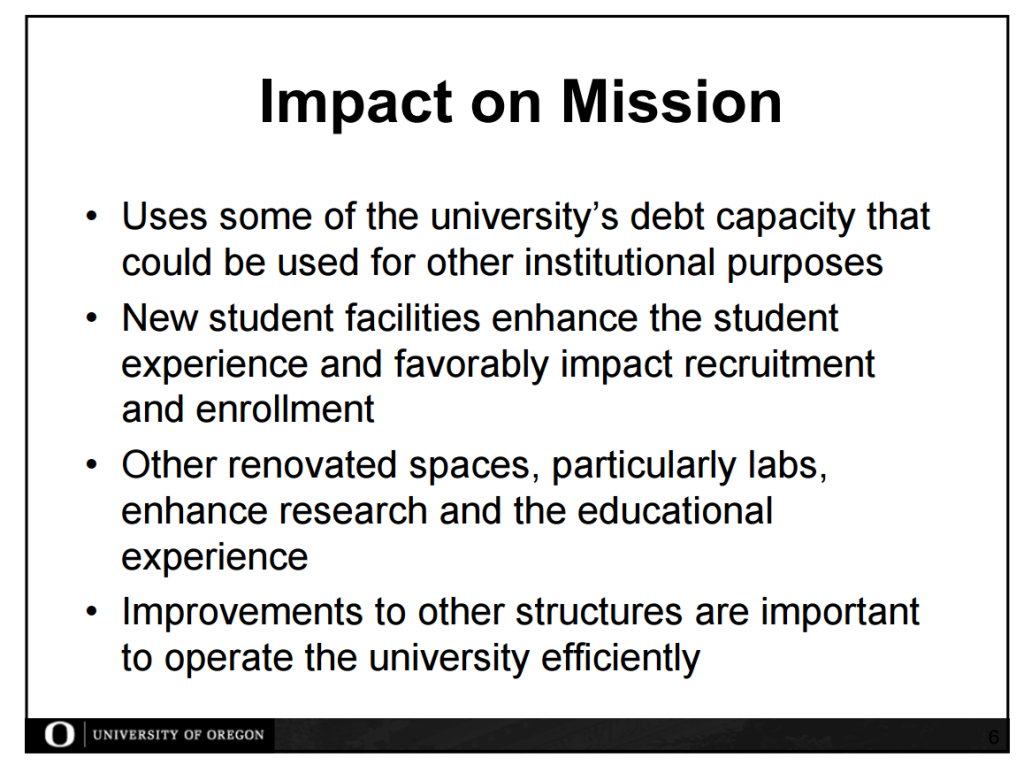
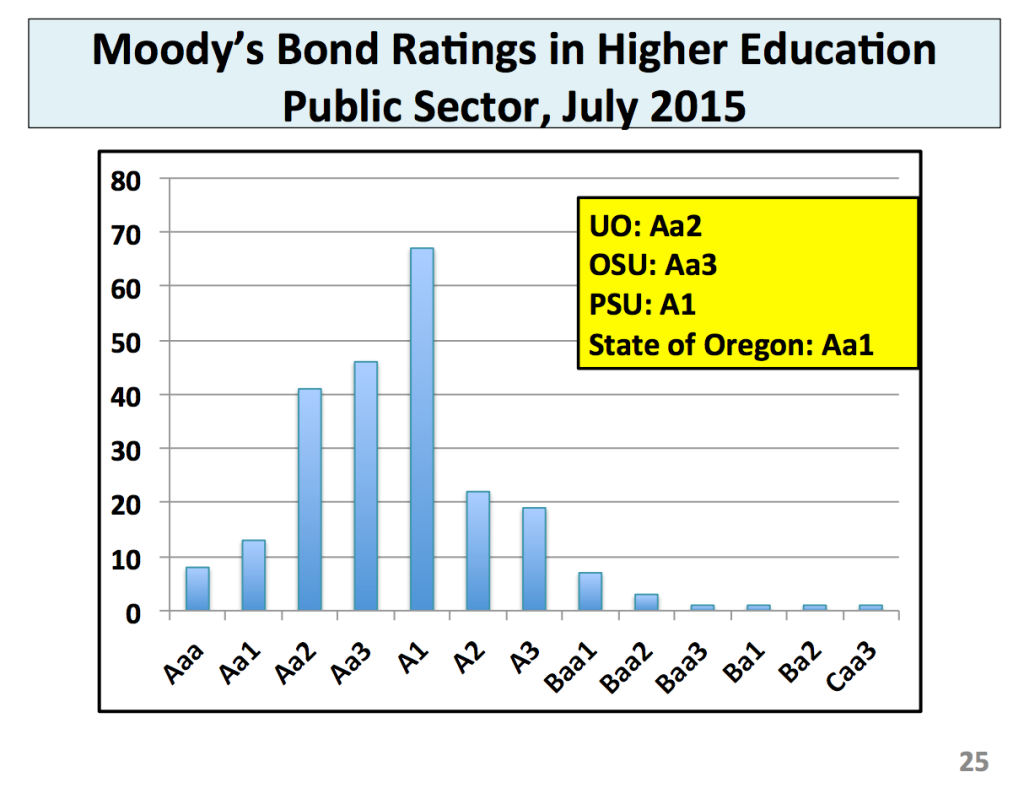

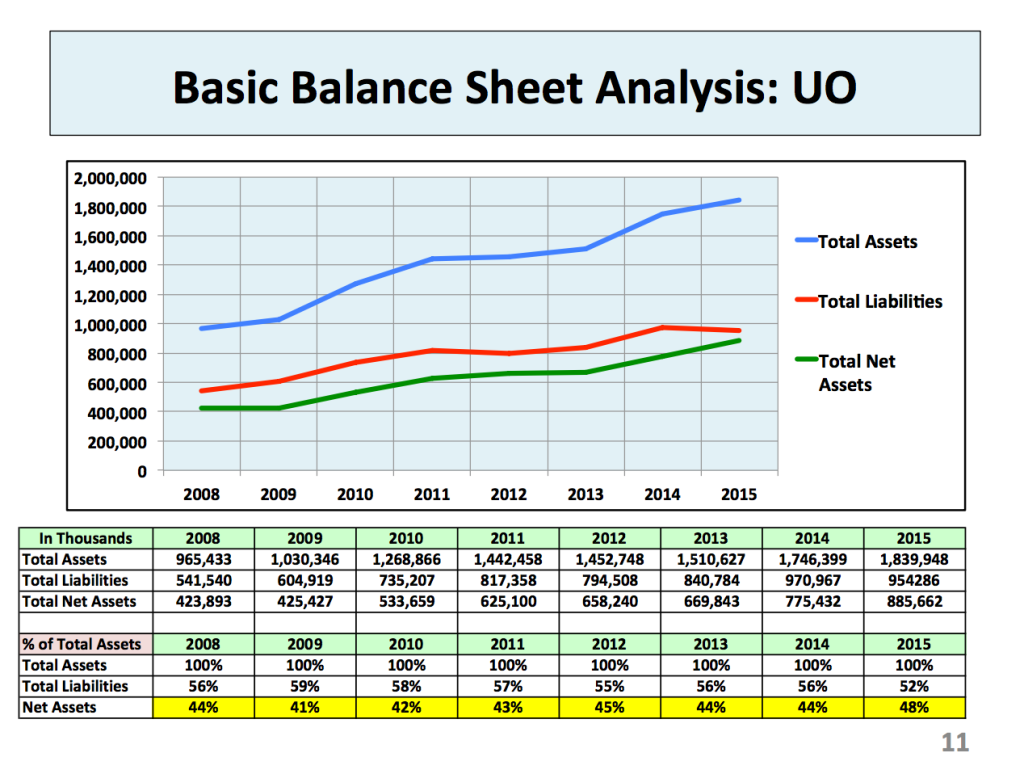
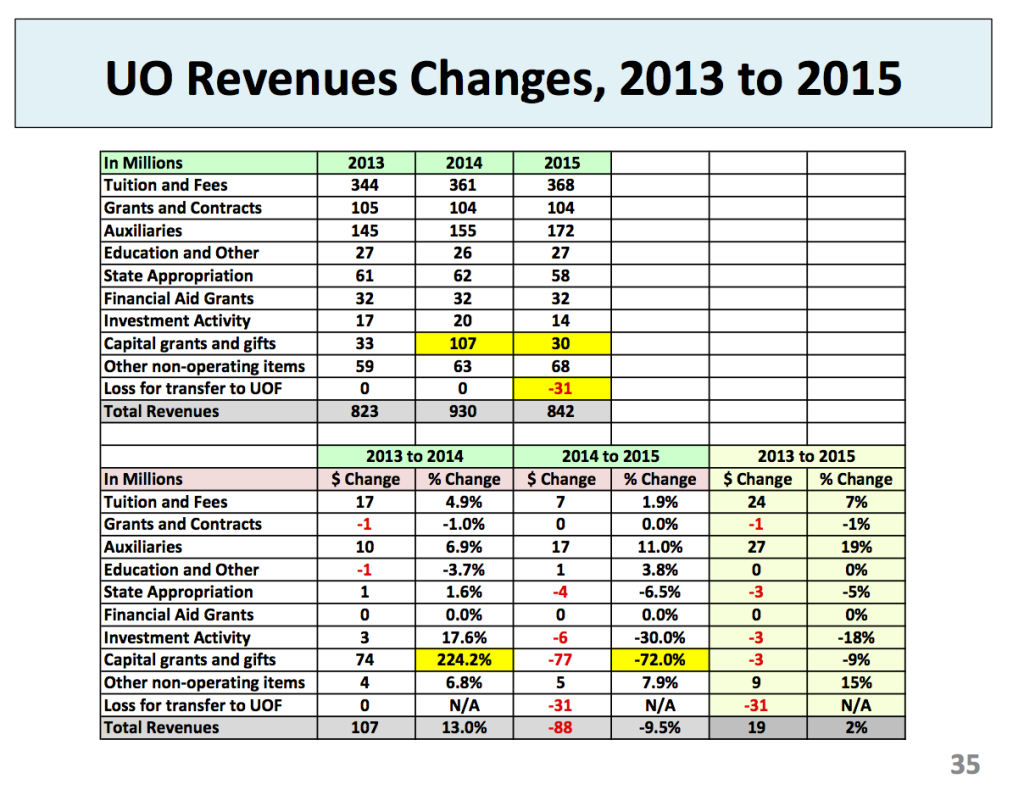
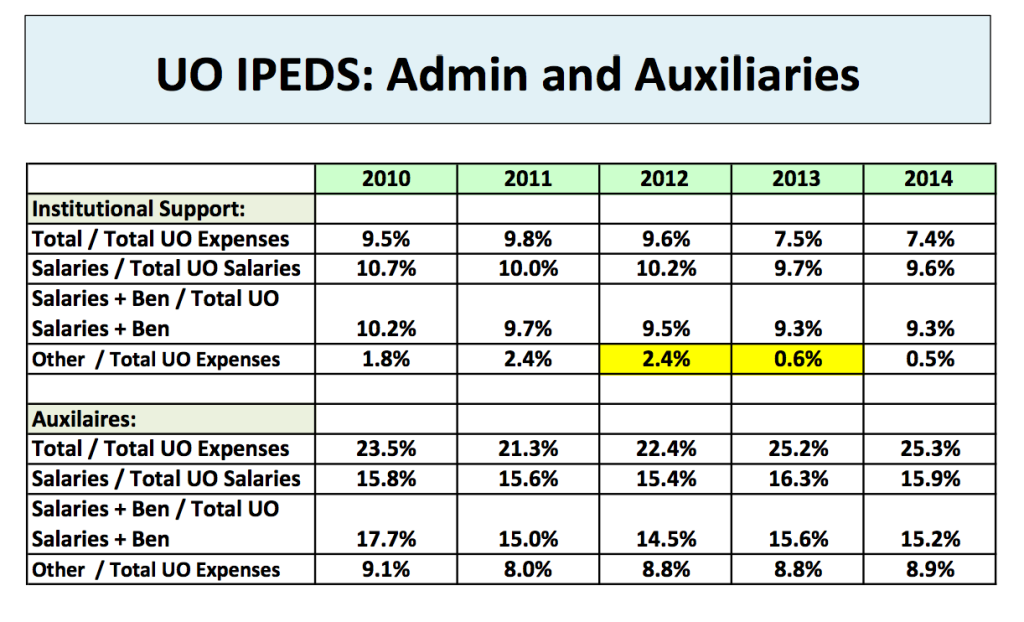
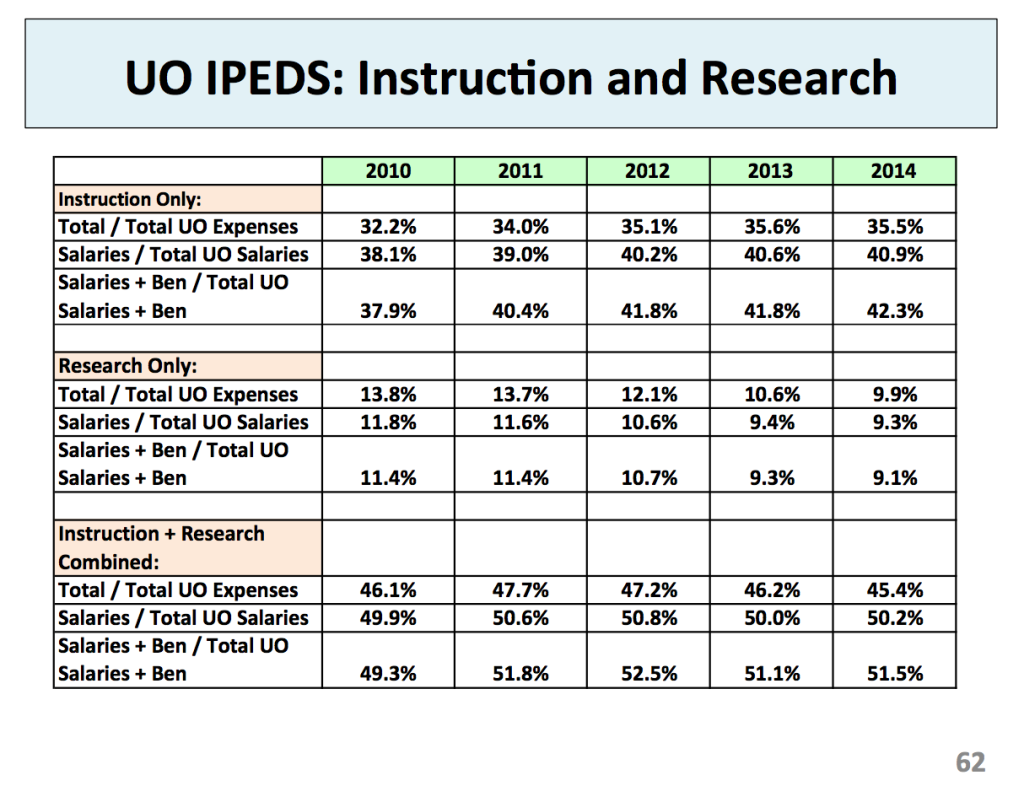
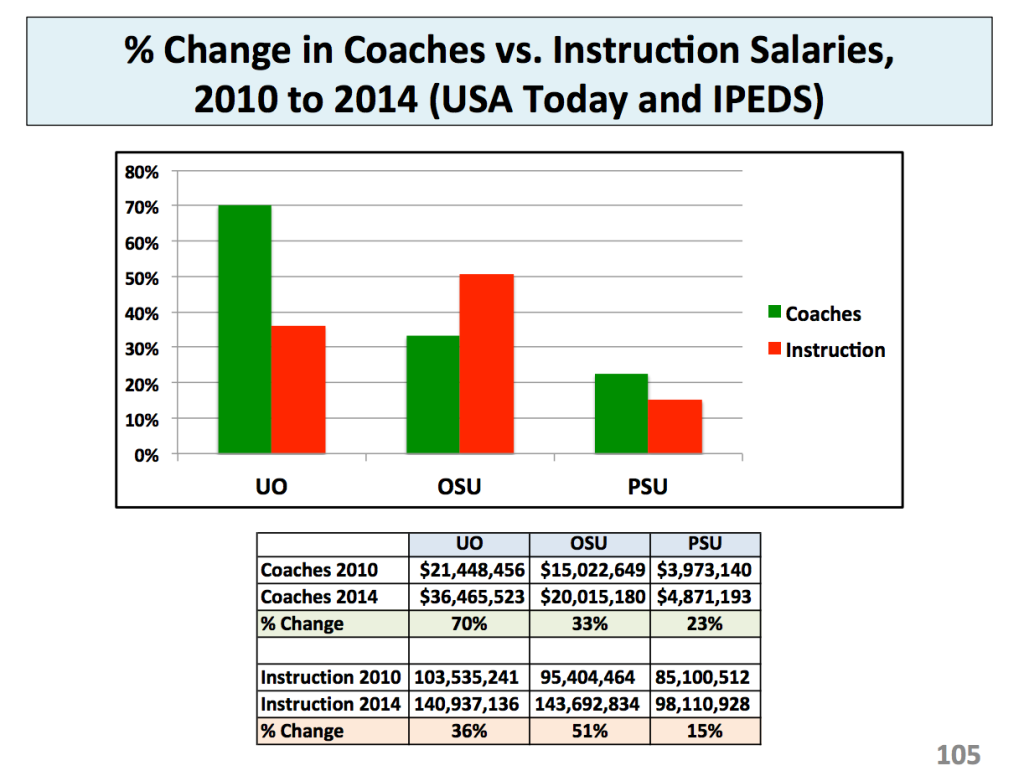
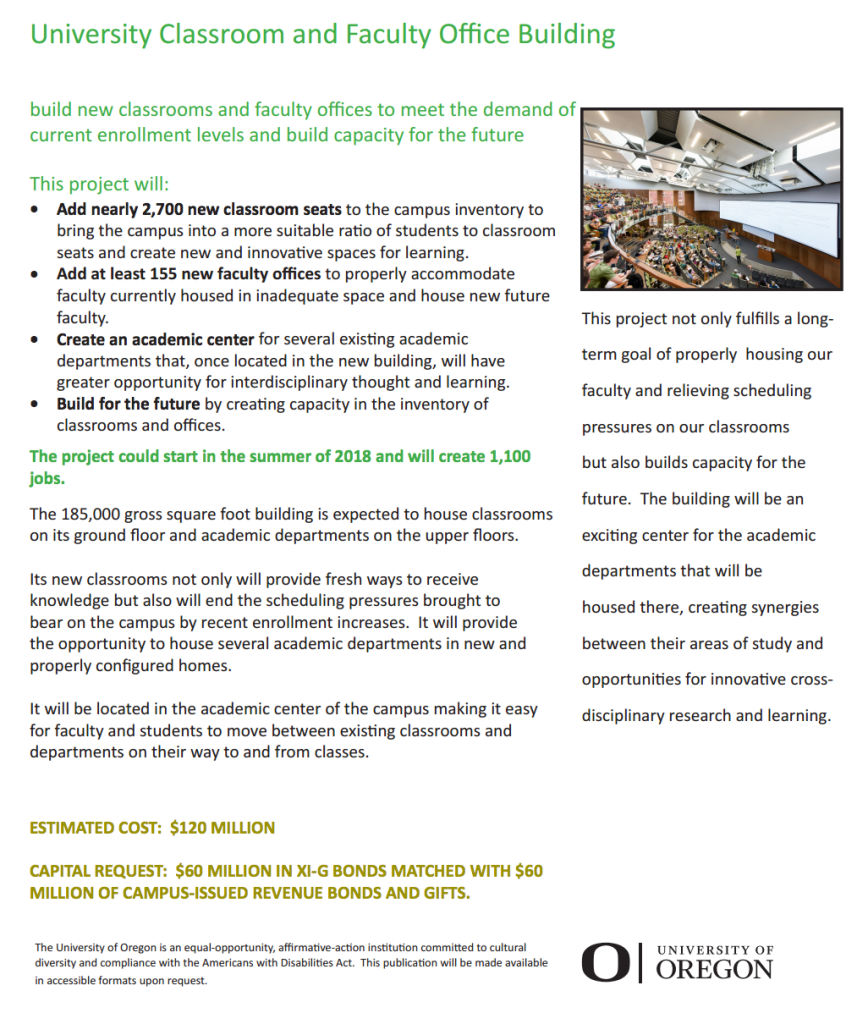
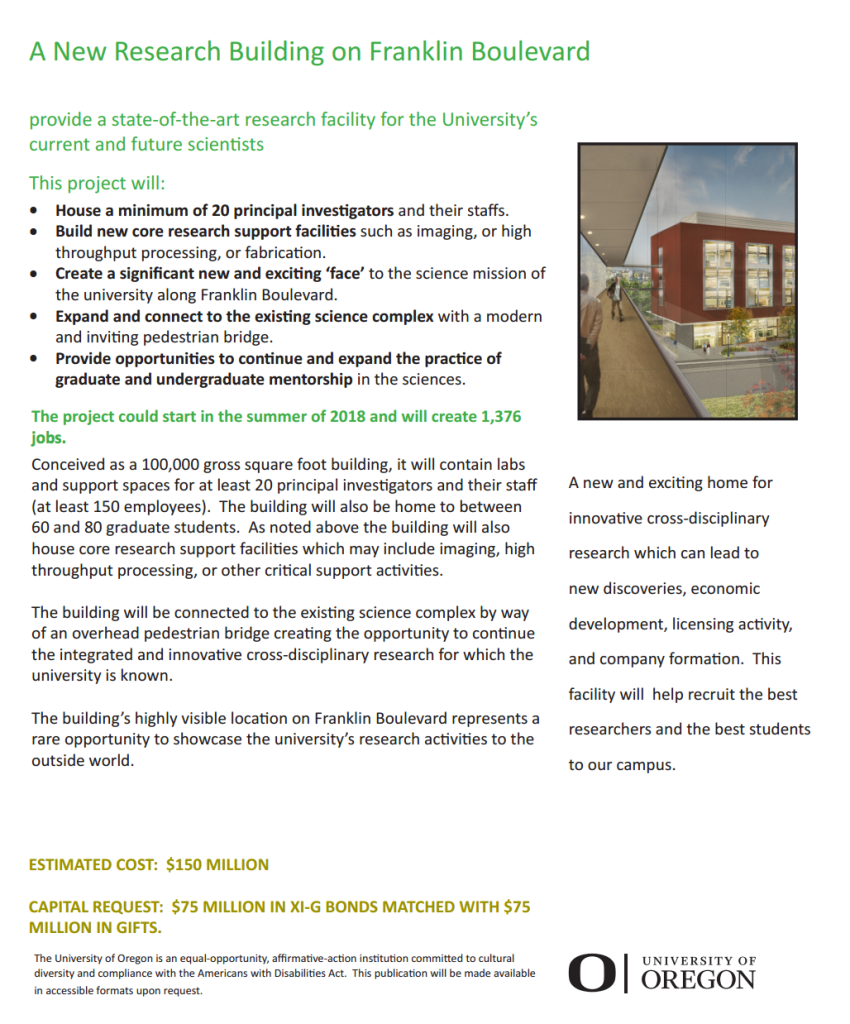
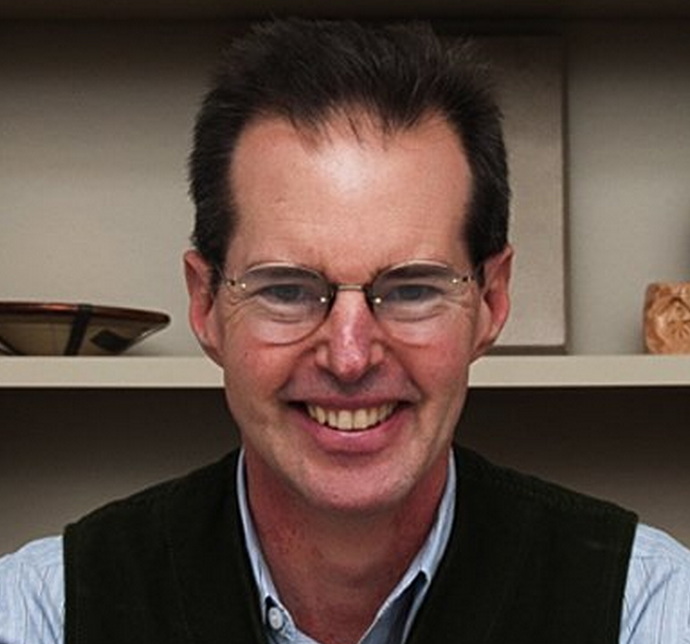





Removing Collier House? Is that a serious suggestion? Isn’t it an historic building?
Yes, it is considered a historic building — when it was refurbished a few years ago (after a disastrous plumbing leak), the powers that be allowed for no alterations to the interior (i.e., no additions of doors or walls) because of its historic status. But the refurbishment was beautifully done.
That’s nice. But it still looks ridiculous in comparison to Ellis Lawrence’s work. Mr. President, tear down this building.
and where will those music faculty go? there isn’t enough room in the School of Music.
A parking structure will be so much uglier than what’s there now. I’m all for more parking but a parking structure in the middle of campus isn’t exactly appealing.
Not tear down, move.
I’m pretty sure that Collier House was moved to its present position.
Any campus historians lurking who can weigh in?
Yes, it was moved to its current location. It used to be the President’s house. It is the perfect home for the Musicology Dept., and is the site of Collegium concerts and many other performances, classes and discussion sections, lessons, master classes, and lectures. It also is the home to 9 GTFs and (who share a large office in the basement) and 4 faculty members.
Right now (Thu 4:52pm), students are there rehearsing for the upcoming Collegium Musicum concert. Come on by!
To be clear, I am in no way advocating burning down Collier House when anyone is inside.
The availability of Collier for the Musicology Dept was a prerequisite for the downsizing of the SOMD remodel. There is literally no room for Musicology in the new SOMD. But I note that Musicology is one of the most cost-effective, in fact profitable, parts of SOMD–perhaps THE most. So don’t burn down the building whether anyone’s currently in it or not, UOM.
Hey, I’m not an arsonist, I’m just reporting the opinions of T. Jefferson, from Notes on Virginia. Little fires do happen though:
The inhabitants of Europe, who dwell chiefly in houses of stone or brick, are surely as healthy as those of Virginia. These houses have the advantage too of being warmer in winter and cooler in summer than those of wood, of being cheaper in their first construction, where lime is convenient, and infinitely more durable. The latter consideration renders it of great importance to eradicate this prejudice from the minds of our countrymen. A country whose buildings are of wood, can never increase in its improvements to any considerable degree. Their duration is highly estimated at 50 years. Every half century then our country becomes a tabula rasa, whereon we have to set out anew, as in the first moment of seating it. Whereas when buildings are of durable materials, every new edifice is an actual and permanent acquisition to the state, adding to its value as well as to its ornament.
… the remedy is easy. A little fire kindled in the room, …
I don’t get the hating on Collier either. It’s a nice cozy space for small performances. Plus you don’t have to schlep all the way down to 18th Street.
A cozy space for small performances that sucks up too much central campus space and costs too much to maintain.
Costs too much to maintain? As UOM would say, “links please.” And why does the Math Department get TWO buildings on central campus?
Does UO really need to fill in another of its last green places in the heart of campus?
In my time here, the charm of the campus has been greatly eroded. The original space was far too small, the product of extremely small thinking. The green setting was all that the physical campus had going for it, it has little topographical interest. But it had enough going for it. But — there was little distinction to the old architecture, though much of it was mildly pleasing. Now most of the open space is gone, filled in with typically (for Oregon and especially, Eugene) mediocre architecture in most cases, or worse.
In contrast, OSU was blessed with a much larger and more far-seeing campus space, and then got the Olmsted (of Central Park, Prospect Park, countless others) campus design.
Today was a nice day outside. Really doesn’t get any nicer.
The Marche Cafe at the museum was packed – faculty and students talking, working, arguing, laughing, typing. Meanwhile the campus “green spaces” were empty, except for people in transit.
We need less green space, and more space people that people use for what people do.
…and OSU has ben filling in open spaces with new buildings. The new building for the College of Business and the Learning Innovation Center all but obliterated the Women’s Quad, a lovely green space once used as athletic and intramural fields.
True, but OSU has a much larger inventory of land to work with. And an incomparably better original design, courtesy of Olmsted.
Personally I prefer Ellis Lawrence’s work at UO.
The proposed new buildings are much needed but why wasn’t any of this also wrapped up with the new EMU – some of the stated goals for the new building could have been part of the New EMU – specifically spaces for undergraduate research …
Something here to offend just about everybody except the students (undergrads, mainly) —
UO is asking for trouble with the latest 4.8% tuition hike. They are grasping for more than people are able to pay given the typical income with its stagnation. Is UO offering that much better quality? I doubt it. Can UO attract a more affluent student body? Well, enrollment already in trouble. When a business — yes, UO is in part a business, just wait until the paycheck doesn’t come through — when a business is in trouble because of declining sales, raising prices generally is not the smartest move. I wonder if the likes of Lillis, Balmer, et al. realize that, if Schill, Coltrane et al. do not. Do they have an alternative plan to increase revenue without chasing away the students? e.g. write a couple of billion in checks? I wouldn’t hold my breath.
Reportedly, the biggest part of the tuition increase, by far, will go to salaries and benefits, mainly faculty, I would wager, but also SEIU, GTFF, the OAs including upper admin. Got to pay for all those raises negotiated with the unions and individuals. Guess who pays? The kiddies. At some point they are going to wake up to the idea that maybe they’re being gouged. Maybe Donald Trump will be invited for a visit?
I am not much one for sit-ins and scream-ins, but if that happens at the big pow-wow, I for one will think they kind of have it coming.
On a more positive note — the data show some promising trends. Instruction i.e. the money used to run departments is gaining in share of total budget, as Institutional Support — central administration, I believe also buildings and grounds — loses a corresponding amount. Fairly long-term trend now, since 2010. It used to be the other way for a long, long time.
Why aren’t data given for Academic Support? This includes a lot of things, libraries, advisors, deans offices. It is a surprisingly large component of the budget. A lot of “administrators” are actually Academic Support professionals. I believe that this component of the budget has not been benefiting at the expense of Instruction.
All in all, it looks from a cursory glance that UO has been doing well lately at orienting the relevant available budget toward academics — I will leave out athletics, please and thankyou — and holding back “administrative bloat.” It was not always thus. Amazingly, through all the turmoil in the central administration.
Lillis suddenly looks like a very old man. Who will be the next Board chair?
I thought blaming everything on the CBA is a patented move of the incompetent CAS Deans. Really, is the rising cost *because* of the CBA? If so, then saying the CBA is to “blame” for higher salaries means that those raises would not have happened otherwise. I was on the fence about the value to me of the union, but if that is true (which is a counterfactual which cannot be tested), then I guess they earned my fair share fees! But really, if we want to stay in the AAU, then keeping our best faculty here is a priority. And that means competitive salaries. So why blame costs on raises for faculty — if our number one priority really is really “excellence”? (Whatever that means!)
Honestly, the “blame it on the union” thing was Gottfredson and Coltrane. I don’t hear it much at all now. Often the reverse.
“So why blame costs on raises for faculty — if our number one priority really is really “excellence”? (Whatever that means!)”
They are costs, whether they are for a good purpose or not. With what is the University going to pay those costs? Higher tuition! Since nobody else seems to be coming forth with the needed dough. What happens if the clientele say Enough!? Enrollment is already dropping. What if the state says Enough?
What would you have the “incompetent CAS Deans” do? Are they able to create money out of thin air, like the Federal Reserve? Are they able to overrule Coltrane and Schill? Will throwing a tantrum really help? I have my doubts. What do you recommend?
In fairness to our new BOT overlords, I didn’t hear any mention of EXCELLENCE today.
I can’t believe we’re talking about financial hardship being a result of long-overdue salary increases for faculty, staff, and OA’s. I look around and I see massive sums being spent on non-core labor costs: construction, athletic events, athletic department salaries.
We lost so many good faculty in the dry period when there were no raises (2007? 2008–2013) except for the unevenly-distributed “equity adjustments” of 2011. (A lot of good faculty also stayed, for the record.)
Paying faculty a competitive wage is part of the cost of doing business, if your “business” is a university. For years on end the UO wasn’t paying that cost of doing business and the inevitable AHEM “realignment” of resources was bound to be a shock to an institution that had gotten out of the habit of budgeting salary increases to the people delivering the instruction and doing the research that are supposed to be the central mission of the university.
“Excellence” in this context means the truly excellent pay of Schill, who’s total compensation is approaching $1 million.
“Curry: What about UO taking core classes at other universities to save money?
Marcus: We’ve heard that, don’t have good data yet.
Coltrane: We’re trying to figure this out. Students are taking enough UO credits.
Curry: Could it be cost per credit?
Schill nods.”
translation: UO is pricing itself out of the market in Core courses, students are going other places (LCC? PSU?) because they get better value for their dollar.
Coltrane says “Students are taking enough UO credits.” But isn’t the problem in some departments precisely that they aren’t taking enough UO credits? Is Coltrane perhaps a little challenged when it comes to mathematical finance? i.e. things don’t add up?
My bad, that should read Coltrane says “Students are not taking enough UO credits.